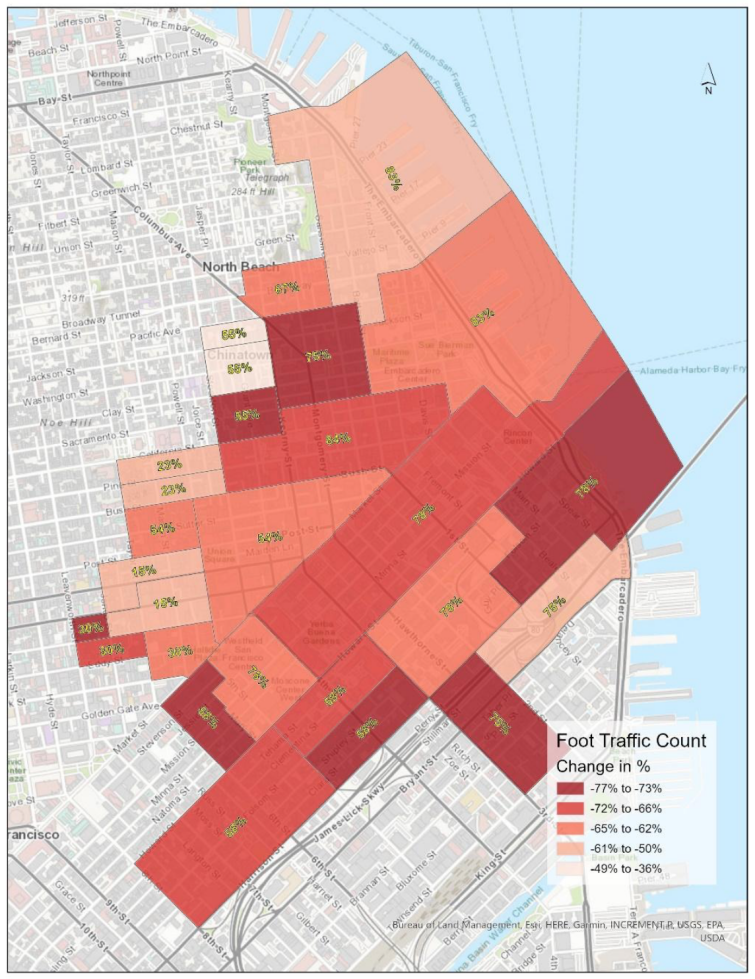Post-Pandemic San Francisco CBD: A Spatiotemporal Analysis on Pedestrian and Consumer Patterns

Abstract
The COVID-19 pandemic has drastically reshaped Central Business Districts (CBDs)
worldwide, with notable declines in pedestrian and consumer activities. San Francisco's CBD, in
particular, has been experiencing a remarkably slow recovery in the wake of these changes. By
conducting a spatiotemporal analysis with mobile phone location-based data and credit card
transaction records, this present research reveals a considerable decrease in foot traffic,
residential occupancy, and expenditure, with peak activities transitioning towards weekends and
later hours. A shift in pedestrian and residence patterns away from the traditional CBD core
neighborhoods like Union Square and the Financial District is identified, leading to a diffused
urban landscape. Notably, neighborhoods characterized by high-density office space have
endured disproportionately adverse impacts, highlighting their vulnerability to pandemic-related
shifts. These insights provide a foundation for strategic, data-driven decision-making to address
the evolving post-pandemic dynamics of central business districts.